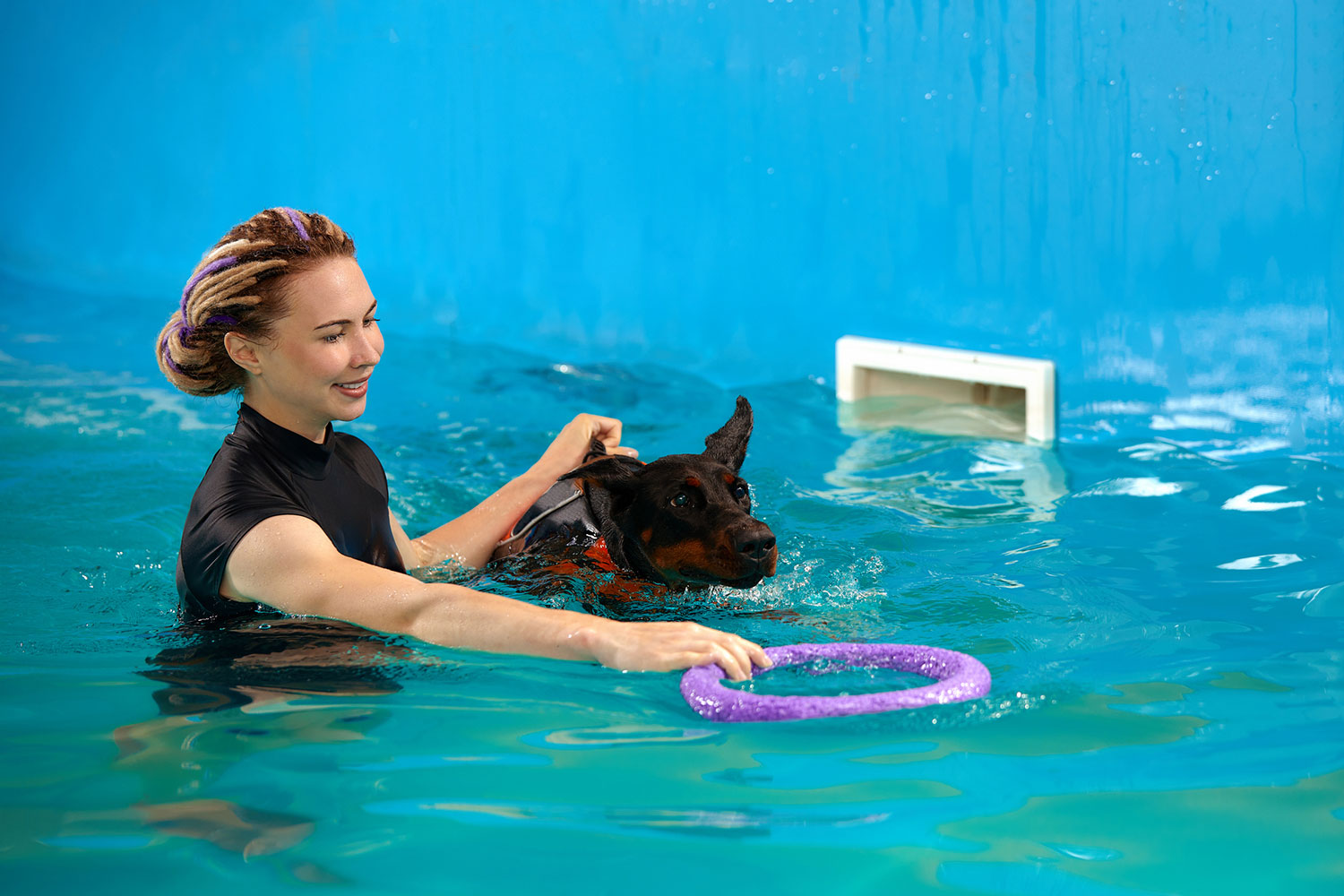What Is Veterinary Physical Rehabilitation?

Pets can encounter many health challenges throughout their lives, from injuries and surgeries to age-related conditions, that impact their mobility and overall well-being. But all is not lost—the world of veterinary physical rehabilitation offers tailored solutions that will help your pet regain their strength, mobility, and quality of life.
Veterinary physical rehab offers many benefits with few drawbacks, so you should not hesitate to explore this option if your pet is conditioning or recovering from an injury or surgery. Learn how veterinary rehabilitation can aid your pet during their recovery, and then discuss therapy options with your AAHA-accredited veterinarian.
What techniques are used in veterinary physical rehabilitation?
Veterinary physical rehab encompasses a multitude of therapies that can complement traditional Western medicine or be used alone. Common treatment modalities include:
- Therapeutic exercises — Therapeutic exercises include range-of-motion exercises, standing on unstable surfaces, navigating obstacle courses, and building strength through targeted activities. These activities are tailored to address specific areas of weakness, stiffness, or imbalance in a pet's musculoskeletal system.
- Hydrotherapy — Hydrotherapy involves using water-based exercises to facilitate rehabilitation and promote healing. Controlled swimming sessions provide low-impact exercise and allow pets to build strength and endurance at the same time. Underwater treadmill therapy helps improve muscle strength, joint range of motion, and cardiovascular fitness.
- Massage therapy — Massage therapy involves manually manipulating soft tissues to promote relaxation, relieve muscle tension, and improve circulation.
- Cold and heat therapy — Cold therapy is particularly effective in the early stages of injury, while heat therapy is beneficial for chronic conditions, stiffness, or muscle spasms.
- Electrical stimulation — Electrical therapy stimulates nerves and muscles with low-level electrical currents, providing pain relief and improving muscle function.
- Therapeutic ultrasound — Therapeutic ultrasound involves high-frequency sound waves penetrating deep into tissues, promoting tissue relaxation, reducing inflammation, and increasing blood flow to the affected area. The therapy can be particularly beneficial for treating soft tissue injuries, such as muscle strains or ligament sprains, and chronic conditions like arthritis.
- Laser therapy — Laser therapy uses specific light wavelengths to stimulate cellular repair, reduce pain and inflammation, accelerate wound healing, reduce swelling, and alleviate pain associated with musculoskeletal conditions, neuropathies, and post-surgical recovery.
- Acupuncture — Acupuncture involves the insertion of thin needles into specific body points to stimulate nerve endings, release endorphins, and promote the body's natural healing response. Acupuncture also can be used to manage pain, improve mobility, and alleviate signs associated with a wide range of conditions, including arthritis, intervertebral disc disease, and neurologic disorders.
- Veterinary spinal manipulative therapy — Veterinary spinal manipulative therapy (i.e., chiropractic care) focuses on the alignment of the spine and musculoskeletal system to improve nerve function, restore mobility, and alleviate pain. Chiropractic adjustments involve gentle spine and joint manipulation to correct subluxations. Chiropractic care can benefit pets with conditions such as hip dysplasia, spinal issues, and musculoskeletal injuries.
How does veterinary physical rehabilitation benefit pets?
Physical rehab primarily focuses on reducing pain and inflammation while restoring mobility and function. Overall, rehabilitation techniques offer pets the following benefits:
- Pain management — Physical rehab employs various techniques to target pain at its source. For example, massage techniques not only soothe sore muscles, but also stimulate the release of endorphins, the body's natural pain-relieving chemicals. Acupuncture alleviates pain and promotes healing. Laser therapy uses focused light energy to reduce inflammation and pain, which accelerates the healing process without invasive procedures.
- Improved mobility and function — One of physical rehabilitation’s primary goals is restoring and enhancing mobility, so pets can move naturally and easily. Hydrotherapy, in particular, harnesses the buoyancy of water to reduce stress on joints while providing resistance for muscle strengthening. By regaining mobility and function, pets can enjoy a better quality of life and engage in their favorite activities once again.
- Faster recovery — Following surgery or injury, physical rehab plays a crucial role in speeding the recovery process. A combination of therapies can promote tissue healing, reduce swelling, and prevent complications such as muscle atrophy. Physical rehabilitation promotes a faster recovery, which minimizes the postoperative confinement period and helps pets return sooner to their normal routines.
- Enhanced quality of life — By alleviating pain, improving mobility, and promoting independence, physical rehab allows pets to enjoy life to the fullest. Whether it's running in the park or playing their favorite game, rehabilitation techniques bring joy to pets, because they can again engage in their favorite activities. Additionally, a higher quality of life often translates to improved mental and emotional well-being, in turn fostering a deeper bond between pets and their families.
- Chronic condition management — For pets suffering with chronic conditions such as osteoarthritis, intervertebral disc disease, or neurologic disorders, physical rehab provides ongoing support and management. Rehabilitation therapists customize treatment plans that address the pet’s individual needs and help alleviate clinical signs, slow disease progression, and improve overall comfort and mobility. When physical rehabilitation is incorporated into their care regimen, pets with chronic conditions can lead comfortable and fulfilling lives for years to come.
If your pet is struggling with pain or mobility issues, veterinary physical rehabilitation offers effective solutions—and hope—for improving their overall well-being and quality of life. Your furry friend may be an excellent candidate for physical rehabilitation, so consult with your AAHA-accredited veterinarian to explore the available options and begin the journey of recovery as soon as possible.



